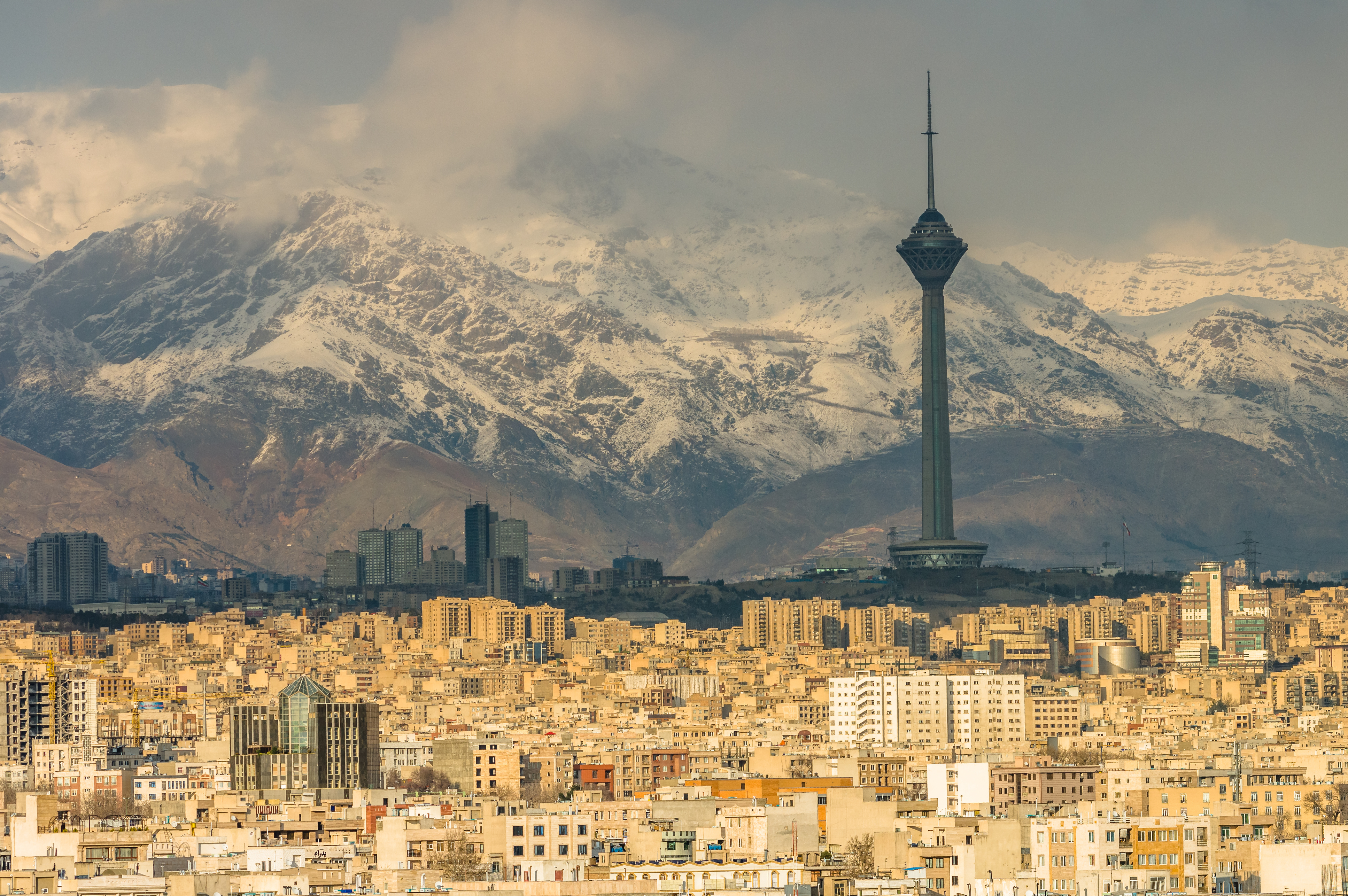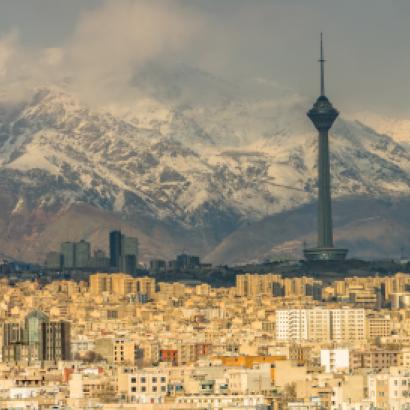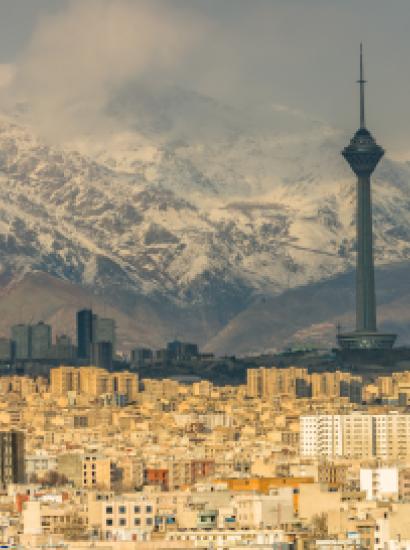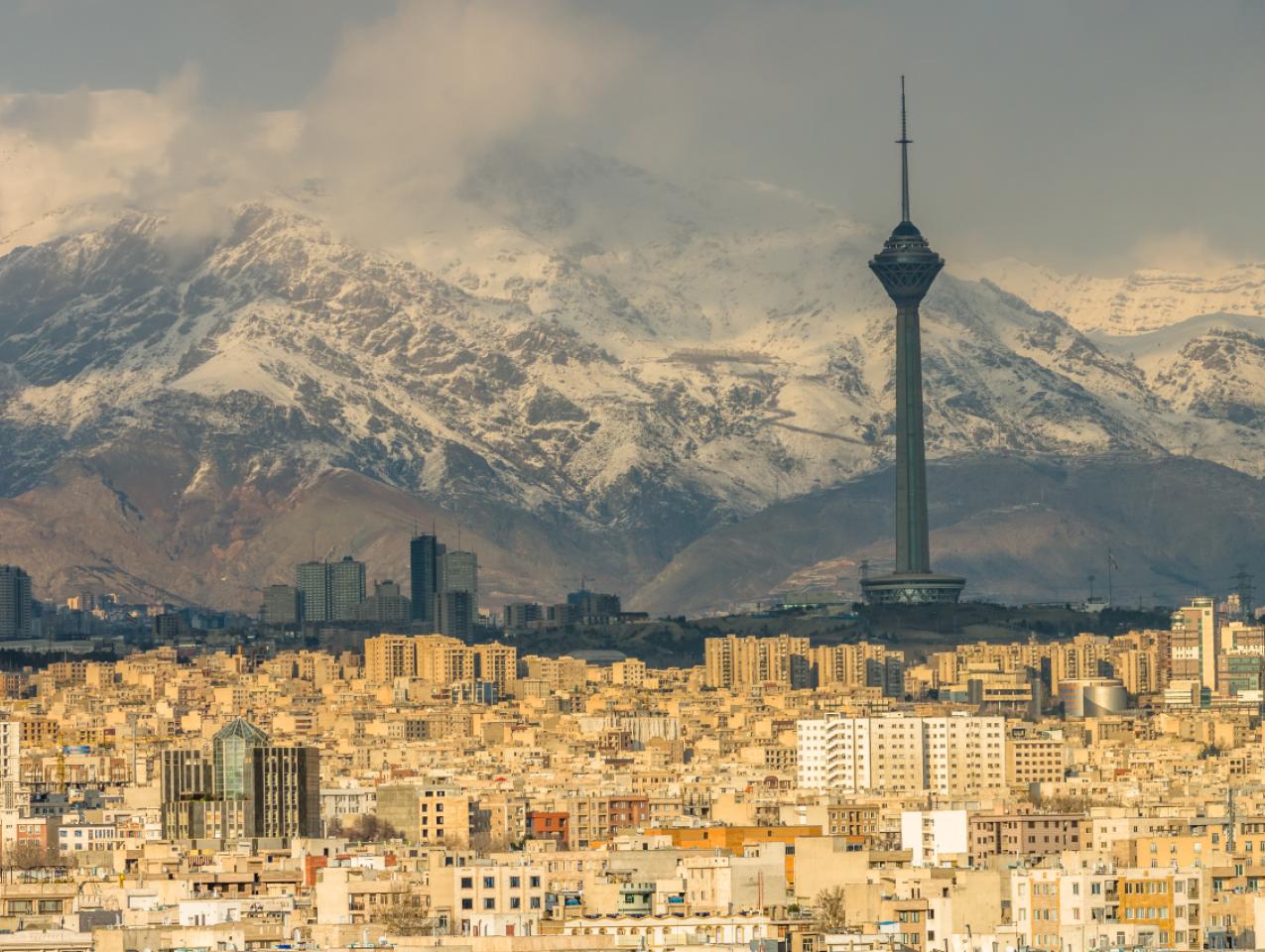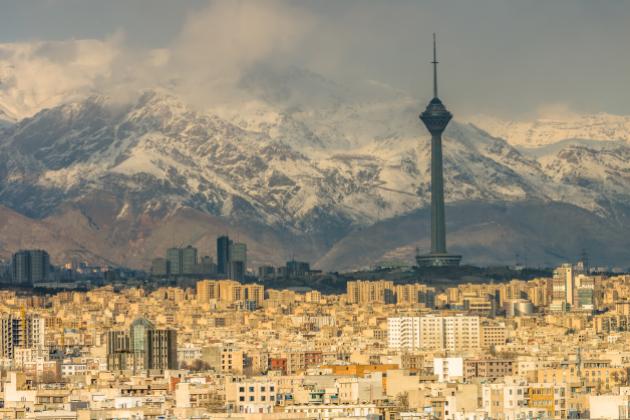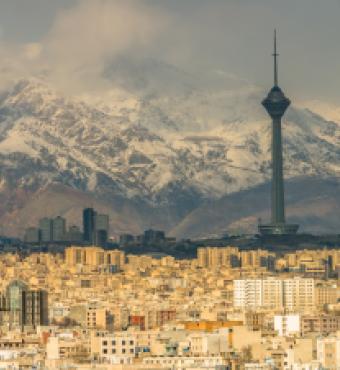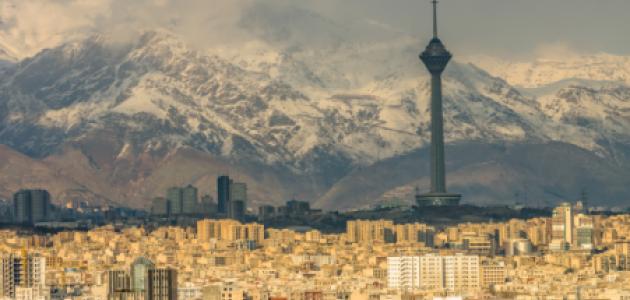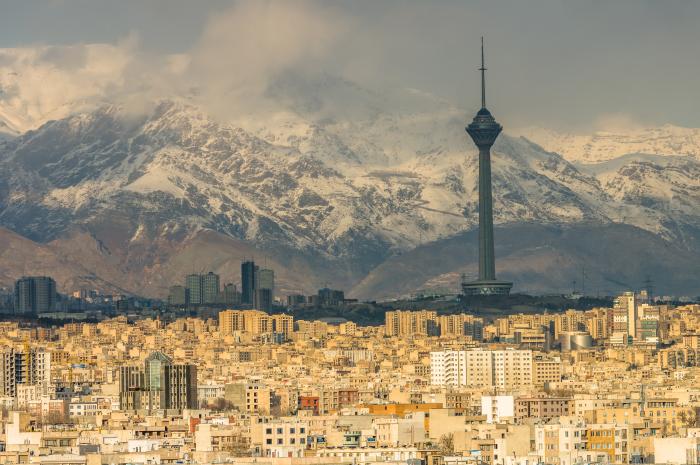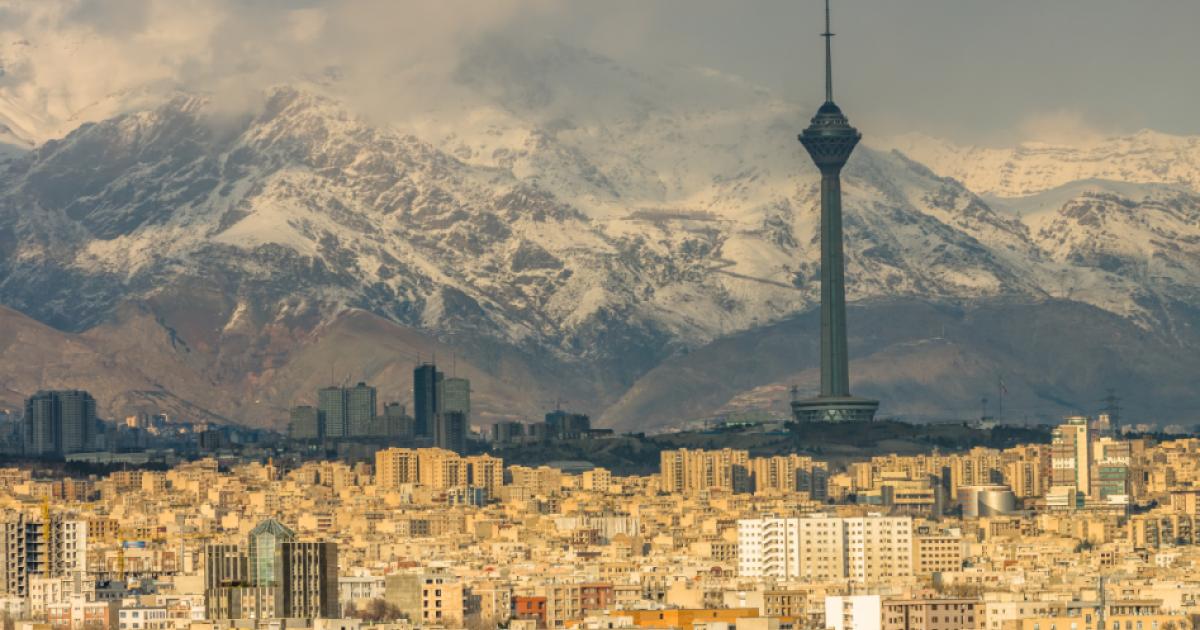The “transnational”: this is how Qassem Soleimani, the former head of Iran’s Qods Force, who was killed in a January U.S. missile strike in Baghdad, is described in Hezbollah-run schools in Lebanon. Soleimani, who commanded the militias prosecuting Iran’s wars in the region and who managed the Islamic Republic’s realm from Iraq to Lebanon, met his end as the Iranian order in those two countries was under severe stress, adding to the Iranian regime’s domestic troubles as it reels under the weight of U.S. sanctions.
Iraq and Lebanon have long suffered from endemic corruption and mismanagement, which have now resulted in failing economies. In fact, Lebanon is already in the stage of financial and economic collapse. Beyond economic grievances, however, the political orders both in Iraq and Lebanon are in a crisis of legitimacy. For months, popular demonstrations have been raging against the Baghdad and Beirut governments and the sectarian political actors who run them. This turmoil in Iran’s Arab holdings adds another layer of pressure on top of the two-year old widespread popular protests inside Iran.
These popular protests have revealed the vulnerabilities of the Iranian regional project, of which Soleimani was the anchor. Likewise, they have exposed the incoherence of U.S. policy ideas about Iran and fractured states like Iraq and Lebanon over the course of almost two decades.
Iran is at the heart of the protests in Iraq and Lebanon. In Iraq, far more explicitly than in Lebanon, the protests have taken aim directly at Iran and its local agents who control the government. Iraqi protesters have defaced posters of Iranian Supreme Leader Ali Khamenei and have attacked the Iranian Consulate along with the offices of militias like the Badr Organization, ripping up pictures of its leader as well. Slogans like “Iran out, out,” have been characteristic of the protests. It bears underscoring that these protests have been raging not only in Baghdad but also in majority-Shiite cities like Karbala, Najaf, Nasiriyah and Basra.
The Lebanese protests have been more widespread in terms of sectarian geography, encompassing both major Sunni cities like Tripoli as well as Shiite cities like Tyre. The anti-Iran element of the Lebanese protests has been indirect. The protests have targeted the entire political system, over which Hezbollah presides. Their slogan, demanding the ouster of the entire sectarian political class spares none: “all of them means all of them.” And they have not shied away from including Hezbollah’s leader, Hassan Nasrallah, by name: “all of them, means all of them, and Nasrallah is one of them.”
The political orders of Iraq and Lebanon share a core feature. While both claim the trappings and formal structures of states, these structures are, in fact, dominated from within by parties-cum-militias commanded by the Islamic Revolutionary Guard Corps on the model of Hezbollah. The reaction of the wardens of these political orders in Baghdad and Beirut has been to suppress the protest movements. In Iraq, the death toll had exceeded 600 by end of January. While things in Lebanon have not yet reached that level of lethality, violence against the protests has been a centerpiece of the sectarian elite’s response from the get-go.
This violent response, however, has not yet succeeded in snuffing out the protests. In Iraq especially, this failure is compounded by competition among the militia leaders, a result of the vacuum left by the elimination of the governor of the realm, Soleimani, and of his top Iraqi lieutenant, Abu Mahdi al-Muhandis. These leaders are now scrambling to claim the head position. The fractiousness of the Iraqi Shiite scene, formerly managed by Soleimani, and the absence of a credible figure to succeed him in that role, has led Iran to rely on Hezbollah as a steadying hand in Iraq, even as it deals with the turmoil in Beirut.
These frailties inside the Iranian order only underscore the fantastical nature of former president Barack Obama’s vision for Iran as the bedrock of stability in the region. But if these protests against the political systems and governments of Iraq and Lebanon have exposed Iran’s vulnerabilities, they have also highlighted the incoherence of U.S. policy in these countries.
On the one hand, the Trump administration’s maximum pressure policy, a fundamental departure from his predecessor’s strategy of realignment with Iran, has been key in exacerbating the structural problems of the Iraqi and Lebanese systems. Since the Lebanese banking sector was dependent on a constant inflow of fresh dollars, the tightening of sanctions on Hezbollah over the past three years further constrained the group’s ability to circulate the proceeds of its global criminal enterprise through the banks. Drying up the flow of dollars denied the corrupt Lebanese political class the ability to limp along and accelerated the collapse.
On the other hand, the president continues to be trapped in the failed policy framework of the Bush and Obama administrations. The frameworks of the Bush administration’s Freedom Agenda, the counterterrorism campaigns, and the explicitly pro-Iranian realignment strategy of the Obama administration all invested the U.S. in the pro-Iranian political orders through the policy of building up state institutions.
Washington is still wedded to the conceit that there are state institutions in Iraq and Lebanon, distinct from and in opposition to Iran’s militias, and that the U.S. needs to strengthen these institutions as the best way to roll back Iranian influences in Baghdad and Beirut.
The protests have put the lie to this conceit. In the imagination of U.S. policymakers, building up the “state” would establish it as the sole legitimate actor, thereby diminishing the clout of the militias. In reality, however, the “state” and the militias are indistinguishable. Hence, the forces beating up, detaining, and shooting protesters in the streets were both the official security forces and the militias. In fact, in certain cases the security services assaulting the protesters were simply the militias in official uniform. The “Parliamentary Police” in Beirut, for instance, is little more than sectarian warlord and Speaker of Parliament Nabih Berri’s private force — in effect an extension of his Amal militia. The “state,” such as it is, is the “Hezbollah state” — precisely the template which the Iranians implemented in both Lebanon and Iraq. It is not the magic antidote to Iranian influence. It is a vehicle for that influence.
That the people on the streets of Iraq and Lebanon are protesting these “state institutions,” indeed the very political systems, is already testimony to the fact that these institutions, emanating from these sectarian political orders, have lost their legitimacy, at least among a large segment of the population. With that, the full absurdity of the argument behind current U.S. policy, that these institutions are the instruments with which to defeat Hezbollah’s “narrative,” comes into focus. If the U.S. doubles down on the mantra of propping up “state institutions,” it would mean bailing out the Iranian order, in the face of an unprecedented popular challenge and economic crisis.
To be sure, it’s unclear, even unlikely, that these protests will lead to a successful overhaul of the entrenched political systems of Iraq and Lebanon. But equally unclear is how the regeneration and continued underwriting of these systems is in any way in the U.S. interest. The U.S. ought not concern itself with salvaging the existing pro-Iranian systems under whatever pretext, whether it’s “strengthening state institutions,” or “contesting Iranian influence,” or counterterrorism. Investment in “state institution-building” only relieves pressure on Iran, as is the case with the sanctions waivers Washington continues to extend to the Iraqi government
Rather, the model for the U.S. should be its policy during the Cold War. The U.S. did not pour money into strengthening “state institutions” in Budapest or Warsaw. Rather, Washington worked on bankrupting and breaking the Soviet Union, all while lending support, moral and political, to the dissident movements in the Soviet realm.
Likewise, the priority for the U.S. is the intensification and success of its maximum pressure campaign against Iran. The focus should be on raising the heat on Iran and bankrupting it, so as to severely limit its means to project power abroad. While it is possible to envision a wide range of outcomes inside Iran, from the weakening or collapse of the current regime to its possible liberalization, the point of the ongoing pressure campaign is much simpler: To raise the relative costs of the regime’s foreign adventures to levels that it can’t sustain. Insofar as the popular protests in Iran, Iraq and Lebanon are challenging the Islamic Republic and its political order in Baghdad and Beirut, and thereby contributing to the pressure campaign, the U.S. ought to support the protesters, and not the state institutions trying to suppress them.







